Strategy can be daunting; strategic planning's complexity and potential failures are real. So real that approximately 67% of strategies fail due to poor execution. As a strategic leader, your aim is to help your organization thrive. To do so, you must improve your strategy's success rate, and it starts with designing a solid plan.
Most organizations eager to define strategies and implement ideas often overlook a crucial step in the process: understanding how the strategy will align with the organization. Before delving into idea development, it's imperative to grasp what the organization demands from the strategy. Some key questions to address at the outset include:
+ How will the strategy be structured?
+ What timeframe will the strategy encompass?
+ How will the organizational structure influence the
strategy?
+ Where do we want to focus our efforts?
Answering these questions upfront is paramount to the success and readiness of your strategy. In our model, we refer to this stage as the Foundation level, where we lay the groundwork for a successful strategic plan.
Before diving into a step-by-step process to build the foundations of your strategic plan, consider exploring our Lean Strategy Innovator Course—a fully self-paced program designed to guide you through designing and implementing a winning and innovative strategy.
When laying the groundwork for a strategy, three main considerations emerge: the structure of the organization, selecting the appropriate strategic model, and choosing a strategic framework to steer your strategic direction. Let's break it down.
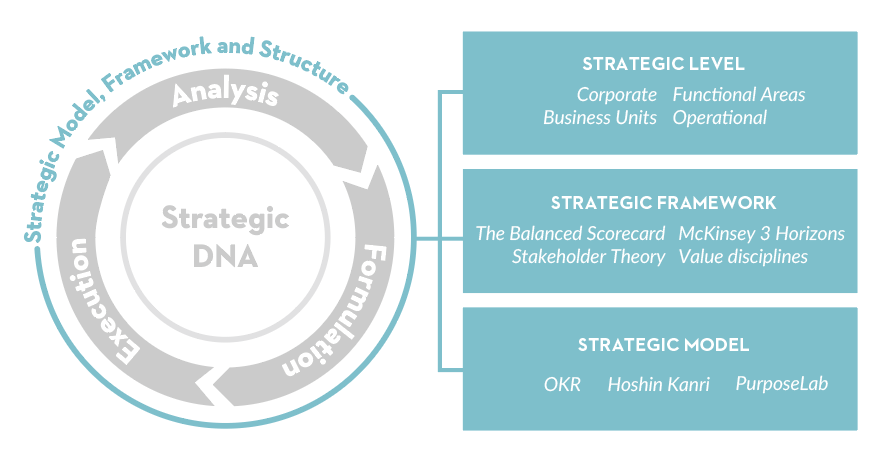
You must first establish the structure of your strategy. This process begins by defining how your organization is structured, who will be affected by the organization's strategy, and how they will contribute. This tailored approach ensures your strategy aligns with your organization's unique needs, rather than forcing it into ill-fitting molds.
Most companies, regardless of size, typically operate across four organizational levels: Corporate, Business Unit, Functional, and Operational. While these levels may not always entail separate teams, they do delineate roles and responsibilities that correspond to different aspects of business operations. Understanding the interconnections among these levels is crucial for aligning plans and goals throughout the company, ensuring cohesive direction and purpose.
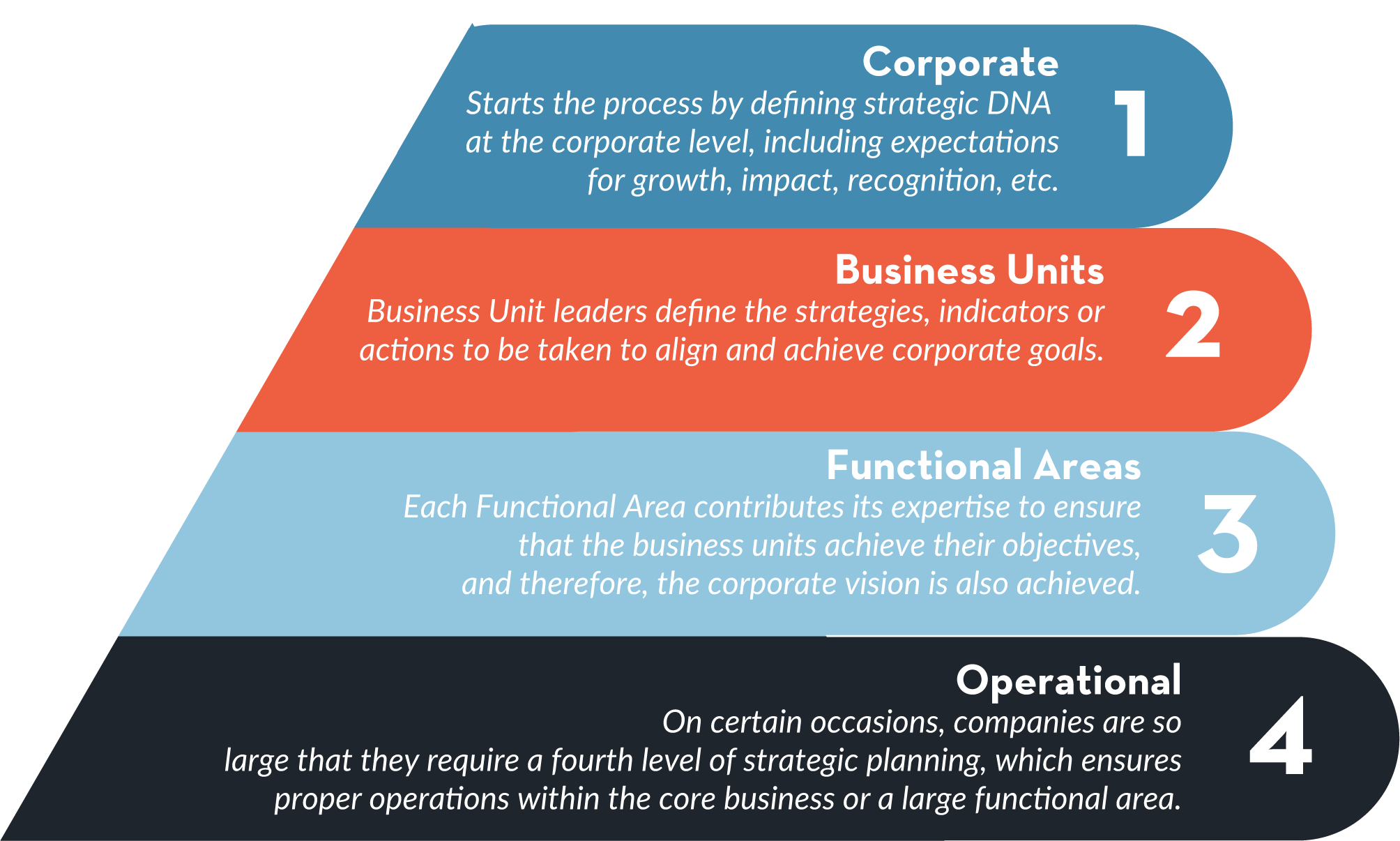
Example
In small companies with fewer than 50 employees, the corporate and business levels often blend into one. Functional and operational levels may also merge into one, resulting in a more streamlined hierarchy.
This means strategic initiatives cascade between fewer teams, making strategies more flexible. However, this also means that top-level management shoulders the responsibility of not only setting strategic direction but also implementing strategies. Despite the simplicity, such structures demand greater involvement from top-level executives.
Strategic models are used to define the elements of your strategy and how they will interact, it establishes the skeletal structure of your strategy.
The fundamental elements common to all strategic models include the organization's vision, focus area, strategic objectives, projects or initiatives, and key performance indicators (KPIs).
We present different strategic models that cater to the diverse needs of your organization, these models include Objectives and Key Results (OKRs), Hoshin Kanri, and our very own PurposeLab Flexible Model.
Why is a Strategic Model Important?
Strategic models are like blueprints. They provide an organized way to identify the essential elements within your strategy. Think of strategic models as similar to designing an airport. Just as we need a checklist for our airport, identifying essentials such as runways, baggage claims, TSA checkpoints, and check-in areas, strategic models help us outline the necessary components of our strategy.
Strategic models organize these elements, which in this case are our vision, focus areas, strategic objectives, etc., into a hierarchical order that connects logically. For example, the runway will be at the top because our goal is to get people on planes and to their desired destinations. Below that, we need TSA checkpoints, and so on.
In the same way, we begin to organize the elements of our strategy. We will likely place our vision and mission at the very top as it reflects what we want to achieve. Below that, we can place guiding principles or values, followed by focus areas. These focus areas will then be followed by objectives, KPIs, and projects.
The image below illustrates how a strategic model functions similarly to an airport blueprint. The top of the model shows the vision and mission, guiding the overall direction. The subsequent layers break down into values, focus areas, objectives, and actionable projects, ensuring every
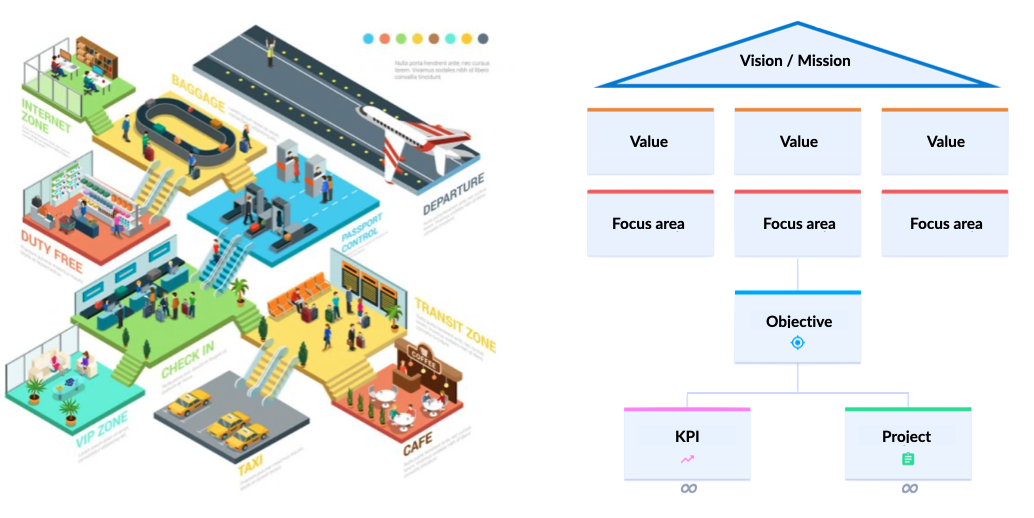
By using a strategic model, you can ensure that every aspect of your plan is in place and connected, much like ensuring every part of an airport is properly arranged to facilitate smooth operations.
Example
Organizations opting for Objectives and Key Results (OKRs) are typically agile entities requiring rapid revision cycles. OKRs involve a bottom-up approach, where objectives are collaboratively defined, and teams generate corresponding key results. In contrast, Hoshin Kanri employs a top-down strategy, with objectives originating from the top and cascading downward through the organization. Our PurposeLab Flexible Model allows organizations to mix-and-match strategic principles from various best practices to provide a tailor-made approach.
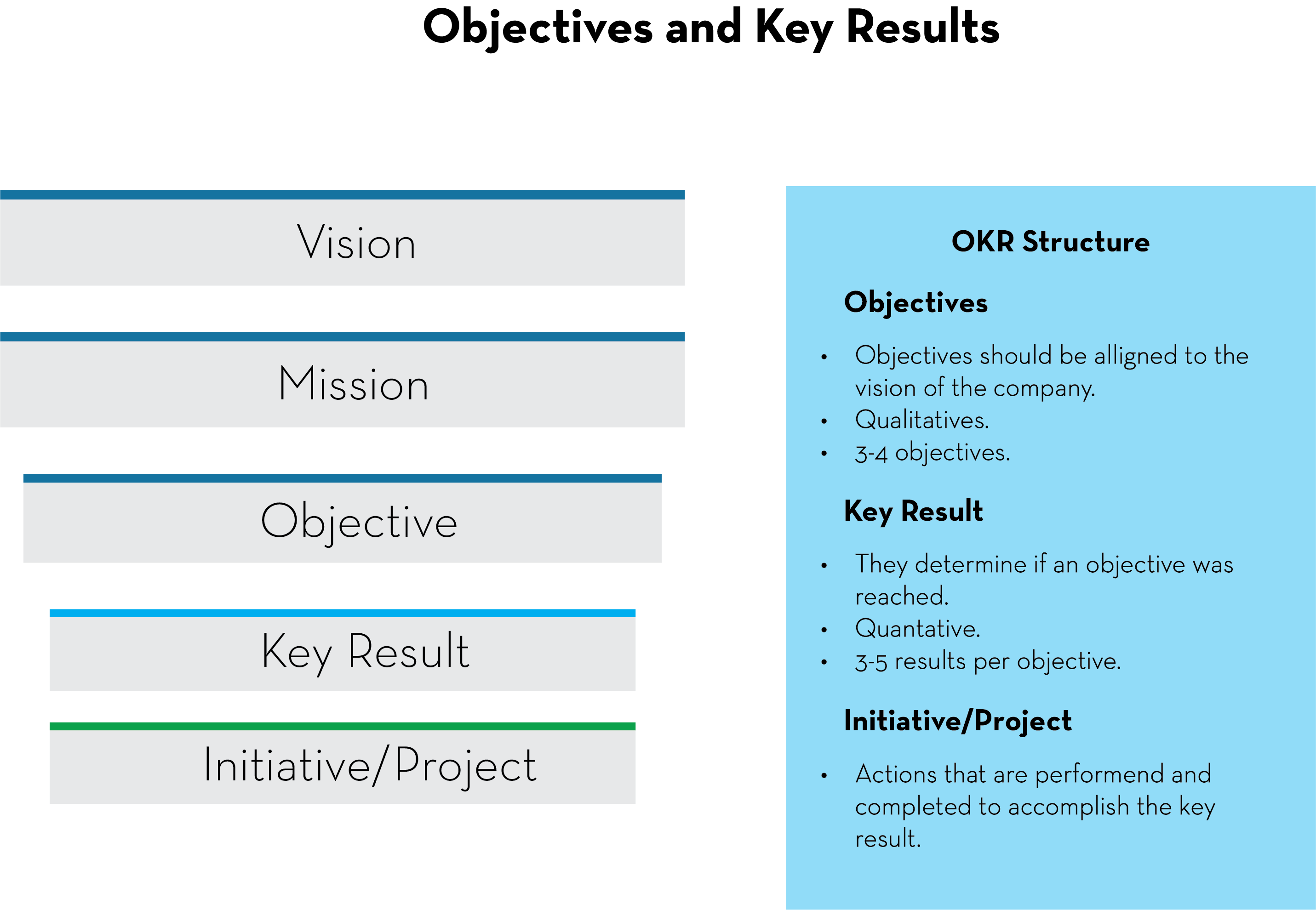
Strategic frameworks help pinpoint focus areas crucial for strategy formulation, and for streamlining planning and execution. Some examples of focus areas include market expansion, product development, improved margin, or talent development. The four strategic frameworks we recommend choosing from are Balanced Scorecard, Ansoff Matrix, McKinsey’s 3 Horizons, and Value Disciplines.
Example
Let's say you've chosen the Ansoff Matrix to define a focus area for your strategy. For context, this framework outlines four distinct strategic growth directions: market penetration, market development, product development, and diversification.
Now, imagine you're a startup that has developed a new task management application. Let's suppose you opt to focus on market penetration. Your strategies would likely center on increasing market share within your segment. This could involve implementing aggressive marketing campaigns, offering promotional discounts, or enhancing user engagement through updates and feature enhancements.
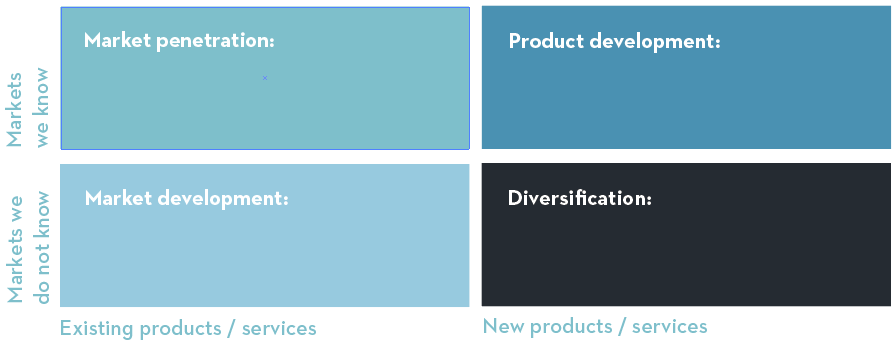
Designing the structure and interactions of your strategy is crucial for its success. Many organizations overlook this step and immediately begin thinking into projects, ideas, and execution. Do not fall into the trap of false starts and take your time to carefully define these three crucial elements.
Download our free framework guide where we dive deeper into these concepts and explore the other steps involved in crafting a successful strategy centered around creative leadership and design thinking.







